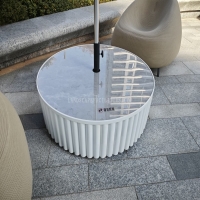Welcome to the website for landscape facilities products and knowledge.
How does the trash can’s design accommodate waste audits or sorting?
Modern trash can designs play a pivotal role in facilitating waste audits and efficient sorting, addressing the growing need for sustainable waste management. Here’s how innovative designs contribute:
1. Compartments for Segregation
Many trash cans now feature multiple compartments, clearly labeled for recyclables, organic waste, and general trash. This simplifies sorting at the source, reducing contamination and improving recycling rates.
2. Transparent or Open-Top Designs
Transparent bins or open-top designs allow waste auditors to quickly assess contents without manual handling, streamlining the audit process and ensuring accurate data collection.
3. Smart Sensors and Tracking
Advanced trash cans integrate sensors to monitor fill levels and waste types, providing real-time data for audits. This technology helps organizations optimize waste collection schedules and identify sorting inefficiencies.
4. Ergonomic Accessibility
Designs with easy-open lids or foot pedals encourage proper disposal, minimizing user error. This is especially useful in public spaces where consistent sorting is critical.
5. Modular and Scalable Systems
Modular trash cans can be adapted for different waste streams, making them ideal for offices or events where waste composition varies. Scalability ensures long-term usability as recycling protocols evolve.
By prioritizing functionality and user-friendliness, modern trash can designs not only support waste audits but also foster a culture of responsible waste disposal, driving sustainability forward.
Related search:

Recommendation
Round metal tube border design table with tempered glass or granite countertop on the top.